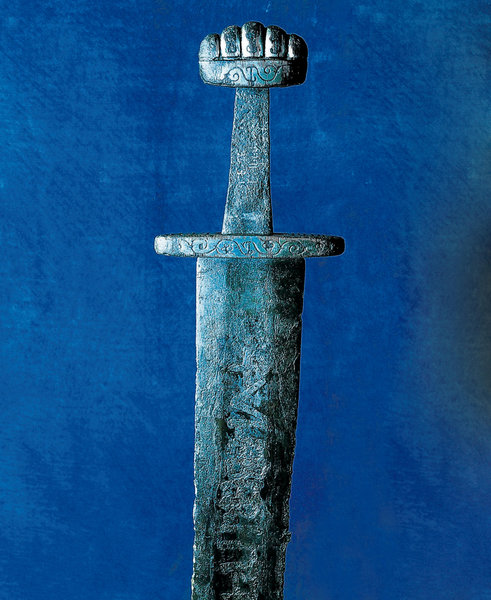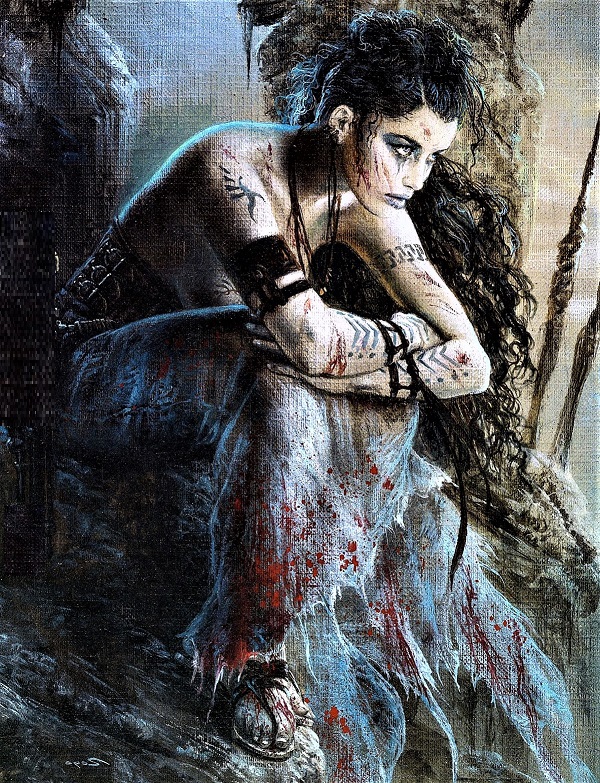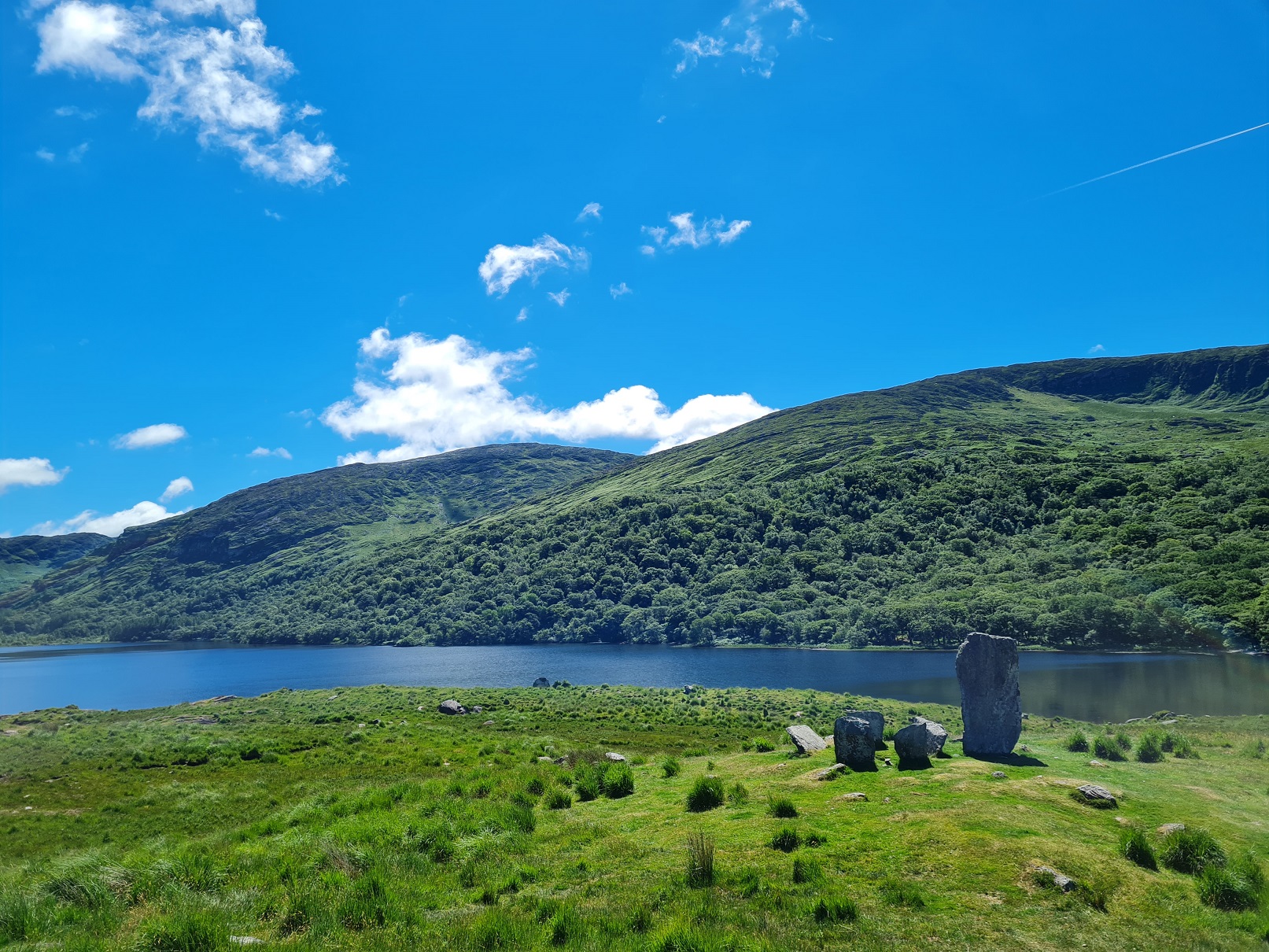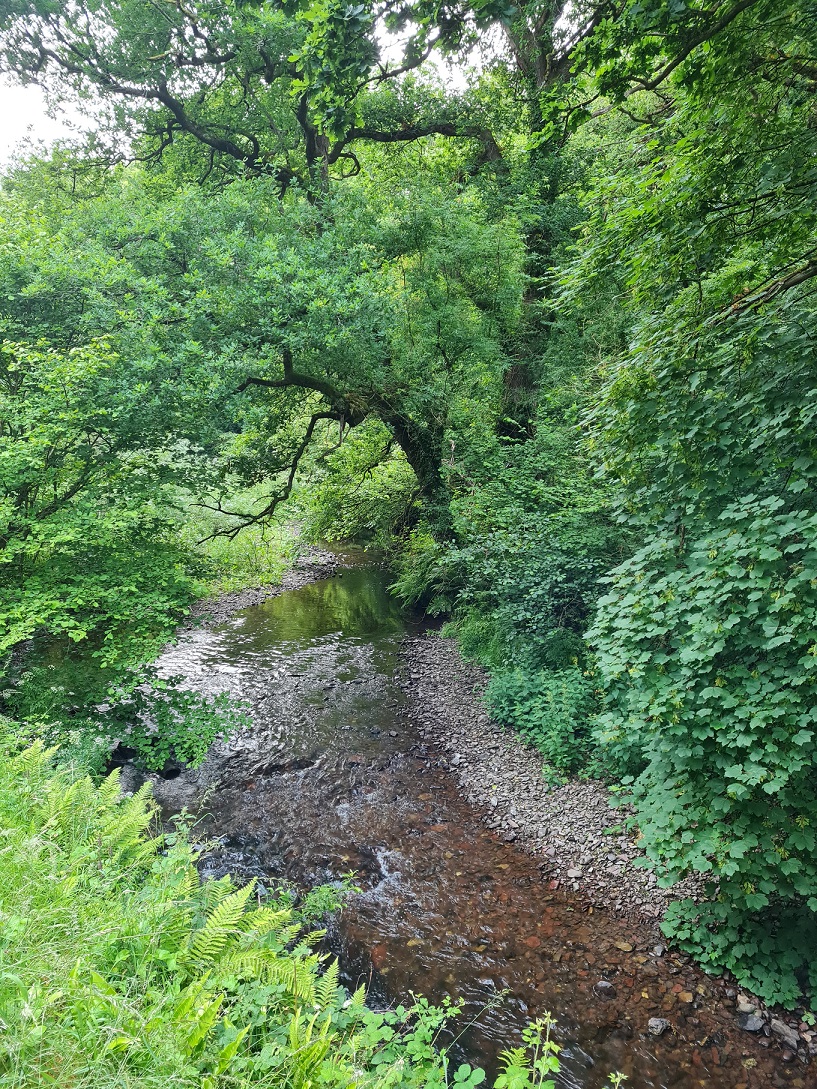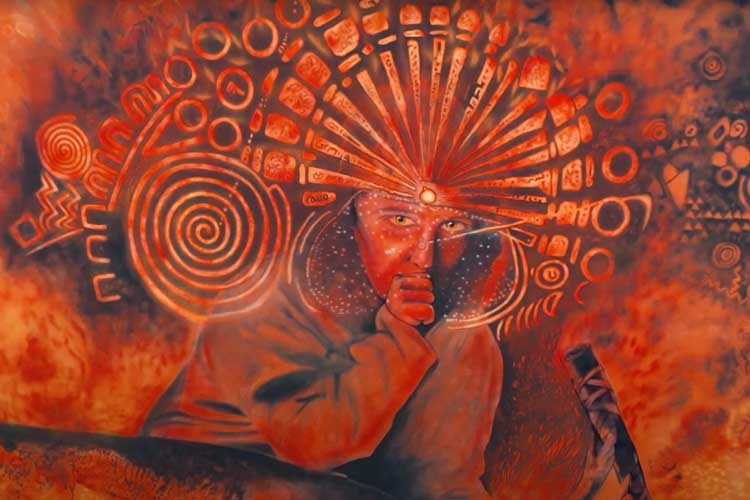
‘Border Guardian’ by, always interesting artist, Vin Hill.
A fictional concept, he describes it as follows:
“The theme around the piece is very much based on the border between the land of the living and the land of the dead in British and Irish prehistorical landscapes. Places like stone henge are often dedicated to ancestors and have entire areas which were almost segregated as the land of the dead. Stone, in general, was associated with ancestry whereas wood was dedicated to life with a special relationship surrounding water in the centre of it all. If there ever was “border guardians” we may never know, but It was fun to think about as I worked through this piece.”
Given that the information we have on henges and other stone monuments is very interpretative (i.e. even with some established patterns, the academics can still do little else but postulate), his description – particularly on the ‘border’s – doesn’t ring true for me.
But, hey! It’s all still a guessing game at this point.



